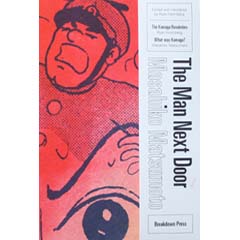The Man Next Door
Résumé
By the late 1950s, a new language of expression had come to dominate Japanese comics. Against the conventions of children's manga, it introduced a more adult focus on dynamic cinematic panelling, gritty urban settings, and the violence and hardships of everyday life in postwar Japan. Today, this style is known as "gekiga" (dramatic pictures), a term coined by one of Japan's most famous cartoonists, Yoshihiro Tatsumi, in 1957. The true innovator, however, was a little known figure named Masahiko Matsumoto. His name for the style was "komaga" (panel pictures), in honor of the fact that the essence of storytelling in the comics medium is based on the dramatic composition of multiple paneled pictures. Matsumoto began exploring this new language in 1954, then perfected it in a series of gripping mystery stories between 1955 and 1957.





